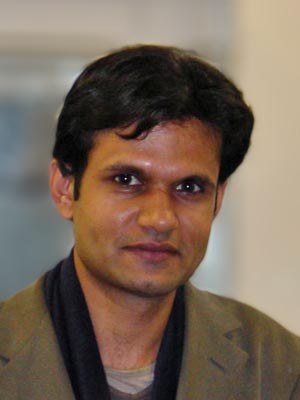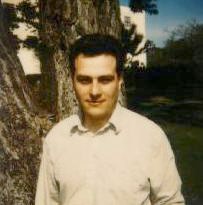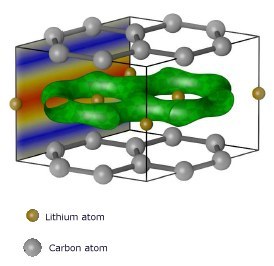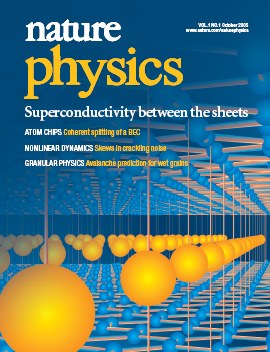Graphite, the layered form of carbon, is not normally a superconductor. But, if you slip a few metal ions in between the sheets it behaves very differently. Researchers at University College London and the University of Cambridge have now synthesised two examples of such superconductors and a second Cambridge team has worked out a simple rule for predicting whether or not any other intercalated graphite compound would be superconducting. The work might allow researchers to develop superconducting carbon nanotubes, which are essentially rolled up graphite sheets.
Tom Weller, Mark Ellerby, and Neal Skipper of UCL and Siddharth Saxena and Robert Smith at Cambridge have synthesised two graphitic compounds C6Yb and C6Ca, which become superconductors when cooled to 6.5 and 11.5 Kelvin, respectively. These are the hottest graphitic superconductors prepared to date, but their behaviour has not been explained by the usual rules of superconductors.

Siddharth Saxena
In an accompanying paper in the inaugural issue of the journal Nature Physics, Cambridge’s Gábor Csányi, and colleagues Ben Simons, Andriy Nevidomskyy, Chris Pickard, and Peter Littlewood, have investigated the electronic structure of these superconductors and compared them with the earlier, but much colder graphitic superconductor C8K, which becomes superconducting only when cooled to within 0.14 degrees of absolute zero (0.14 Kelvin).
It seems that the presence of the metal atoms between the graphite sheets allows the electrons to be conducted in a particular way. However, what was surprising about the computer model they constructed is that it shows that only the compounds where a specific interlayer electronic state of graphite is occupied by electrons become superconducting. The interlayer free electron-like state is not only a property of graphite, but also of the pure metal (these are metal bands that can be reasonably described by a weakly perturbed free electron band). It is this fortuitous combination that results in the filling of the interlayer band, explains Csányi.

Ben Simons
This interlayer state seems to be key to whether or not a particular graphite compound will be superconducting and depends on the size and number of metal atoms in between the graphite layers and their electronic structure. As such, the team has devised a rule that predicts which metal ions and in what ratio should produce superconducting intercalated graphite compounds. In other words, says Saxena, the name of the game is to focus on inserting atoms which lower the energy of this state sufficiently to make it attractive for electrons to want to fill it.

Mark Ellerby
There are several groups trying to unravel the nature of intercalated graphite superconductors, and as such competing theories have emerged in recent months from Matteo Calandra and Francesco Mauri from the University of Paris 6 France and Igor Mazin of the Naval Research Laboratory in Washington DC.
 C2Li should contain an interlayer state that will make the material a superconductor (Nature Physics)
C2Li should contain an interlayer state that will make the material a superconductor (Nature Physics)
The Cambridge theorists are now busy optimising the list of metals to be inserted and in what ratio. Csányi and colleagues suggest barium is likely to be successful. There is also some indication that carbon nanotubes, suitably doped with metals, might also become superconductors.

Metal-graphite superconductors made the cover of the inaugural issue of Nature Physics (Copyright: Nature Publishing Group 2005, used with permission)
Further reading
Nature Physics, 2005, 1, 39-41
http://dx.doi.org/10.1038/nphys0010
Nature Physics, 2005, 1, 42-45
http://dx.doi.org/10.1038/nphys119
Mark Ellerby
http://www.cmmp.ucl.ac.uk/people/ellerby.html
Siddharth Saxena
http://www-qm.phy.cam.ac.uk/saxena/
Neal Skipper
http://www.ucl.ac.uk/~ucapnsz/
Ben Simons
http://www.tcm.phy.cam.ac.uk/~bds10/
Gábor Csányi
http://www.csanyi.net/
Suggested searches
superconductors
carbon nanotubes